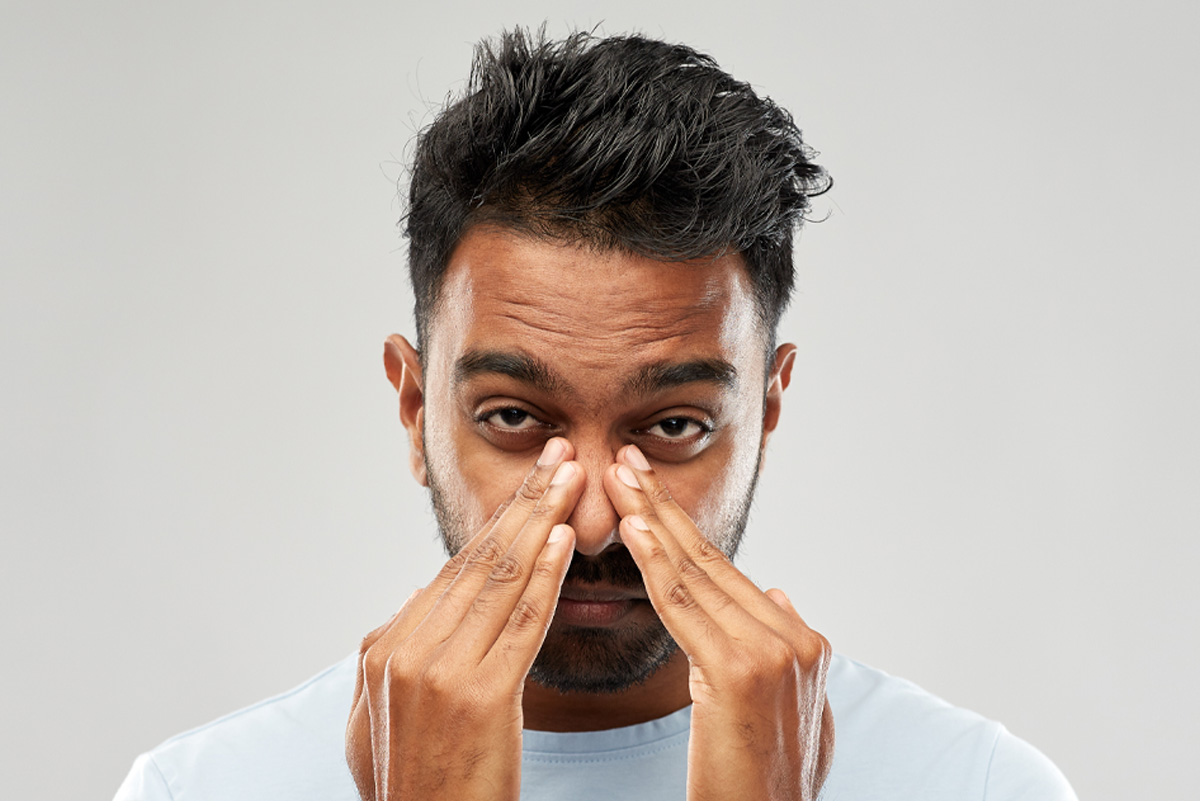Treatment
Treating this diagnosis with Western methods can include antibiotic treatment (ex: amoxicillin), nasal irrigation, and nasal decongestants (such as Sudafed) to kill the bacteria causing the infection and clear the blockage. There is also a consideration in which a patient can choose to not accept antibiotic medication immediately and see if symptoms begin to clear up on their own; antibiotic treatment is not one hundred percent necessary in this condition but may be advised if symptoms do not begin to clear up in a realistic period of time. Over-the-counter pain relievers, such as Tylenol or Advil, can be used to relieve symptoms and pain. Additional Western treatment methods can include the use of antihistamines, saline nasal wash, and if needed, surgical intervention can be considered (this is in the situation of more chronic sinusitis rather than acute).
In addressing the CM pattern of LU invasion by wind-heat, the acupuncture for allergies treatment principle is to expel the wind-heat and support the LU proper function. To treat this pattern and to use acupuncture for allergies and sinusitis, Flaws and Sionneau offer the points LI4, LI11, LI20, and LU5, all reduced. LI4 and LI11 are classic points for clearing (heat, wind, and pathogens), and LI20 can be used locally to relieve sinus-symptoms, as well as to expel wind and clear heat. LI4 and 20 also regulate defensive qi, activate the LU channel, and helps to alleviate pain. LU5, the He-sea and Water point on the LU channel, works to clear heat from the LU, alleviate pain, and descend rebellious qi; this point can also be bled for severe LU heat. Bitong (M-HN-14) can also be used to relieve local pain and congestion. A practitioner may also use a reducing technique on LU7 and GB20. LU7 can release and expel wind, as well as promote the proper descending function of the LU, and GB20 can be an effective local point to clear the sense organs and eliminate wind. Following this expulsion of the pathogen, during a following subsequent treatment, the practitioner can tonify LU9, the source point on the LU channel, as well as BL13, the back-shu point of the LU to help support the LU and strengthen it against further invasions.
A study was done comparing the effects of acupuncture compared to conventional Western treatment for chronic sinusitis; while this article does not directly address acute sinusitis, it is important to consider their findings as patients may develop chronic sinusitis after failing to recover from acute sinusitis. While the addressed pattern of disharmony may differ from that of acute sinusitis, much of the treatment principle is the same: expelling pathogens. Researchers Rössberg, Larson, Birkeflet, Söholt, and Stavem designed a three-armed single-blind randomized control study in which participants received 1) medication with antibiotics, corticosteroids, a 0.5% sodium chloride solution, and local decongestants, 2) 10 traditional Chinese acupuncture treatments, or 3) 10 treatments with minimal stimulation of non-acupoints. Both the acupuncture and non-acupoint groups received 10 treatments with bilateral stimulation of the selected points over a 4-week period. In the “traditional Chinese acupuncture” group, patients were diagnosed with various patterns of disharmony, and the following points were selected: “to remove damp/heat from the Yangming channel, LI4, LI11, ST40, and ST44 were reduced… to remove phlegm/fire from the Shauyang channel, GB34, LR2, LI4, and LR3 were reduced… we sometimes reduced EX-HM-5 when the symptoms affected the lateral area of the eyes.” The sham treatment group received non-points outside of acupuncture channels and the points were stimulated with a maximum depth of .25cun (very superficial and minimal stimulation).
The researchers used sinus CT-scans, patient-reported sinus symptoms, and patient-reported health-related quality of life measures to determine the outcomes of their study. Their results showed improvements via the sinus CT-scan and health-related quality of life scores over 12 weeks in the conventional treatment group. The researchers did also find “signs of improvement in symptoms” over four weeks in all groups, and also found a non-significant difference between the conventional medicine group and the sham acupuncture groups, as well as less difference between the conventional medicine group and the traditional acupuncture group; they go on to further explain that they only found a non-significant difference in symptom score changes from 4 to 12 weeks between conventional treatment and traditional Chinese acupuncture and that after 52 weeks, there was minimal difference in symptom scores across the groups. The researchers note that theirs may be the first study, at the time, done on acupuncture for allergies and sinusitis, and they struggled to find studies to which they can compare their findings. Further research needs to be performed to study the effectiveness of acupuncture for treating acute sinusitis, possibly comparing that to antibiotic treatment, as well as acupuncture treatment for chronic sinusitis.

